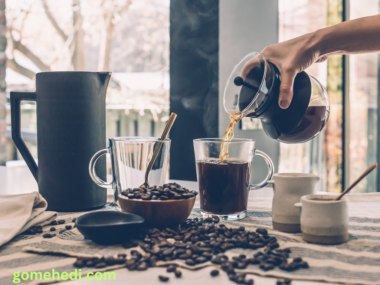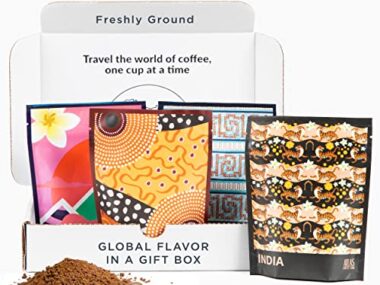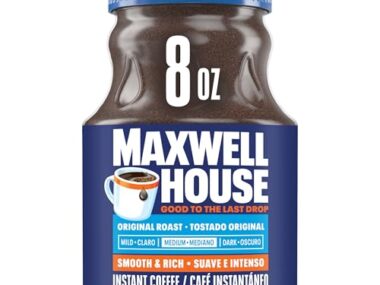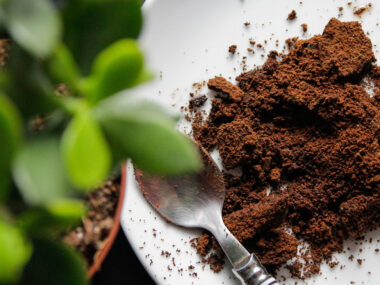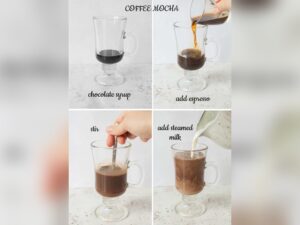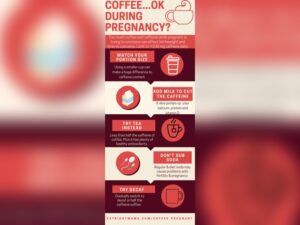For 10 cups of coffee, use 10 scoops of ground coffee. This general rule works for most coffee makers.
Coffee lovers know the importance of the perfect brew. The right coffee-to-water ratio can make or break your morning cup. If you’re preparing coffee for a group or just a big pot for yourself, you need to get it right.
Using the right amount of coffee ensures a balanced and flavorful drink. Too much coffee can be overpowering, while too little can taste weak. This blog will guide you through the process, so you always get the best cup. Let’s dive into how many scoops of coffee you need for 10 cups.

Credit: coffeechronicler.com
Coffee Scoop Basics
Brewing the perfect pot of coffee can be an art. One of the key factors is using the right amount of coffee grounds. To make 10 cups of coffee, knowing how many scoops to use is essential. This guide will explore the basics of coffee scoops, helping you achieve that perfect cup every time.
What Is A Scoop?
A coffee scoop is a tool used to measure coffee grounds. Typically, it comes in various sizes, but the standard scoop is crucial for consistency. Understanding the size and usage of a scoop can help you make a delicious pot of coffee.
Here are some features of a standard coffee scoop:
- Material: Made from plastic, metal, or wood.
- Design: Usually has a long handle for easy use.
- Capacity: Generally holds about 2 tablespoons of coffee grounds.
Using a scoop ensures you get the right balance of coffee to water. It simplifies the brewing process, especially for those who don’t have a kitchen scale. Many coffee makers come with a scoop, but knowing its capacity is key. A standard coffee scoop is about 2 tablespoons, which is approximately 10 grams of coffee.
Having a consistent measuring tool helps maintain the taste and strength of your coffee. Whether you prefer a strong brew or a lighter one, a scoop provides a reliable way to measure your coffee grounds.
Standard Measurements
Knowing standard measurements is essential for making a great pot of coffee. The general rule is 1 scoop of coffee per 6 ounces of water. For 10 cups of coffee, this translates into specific measurements.
Let’s break it down:
| Number of Cups | Water (oz) | Coffee Scoops |
|---|---|---|
| 1 | 6 | 1 |
| 10 | 60 | 10 |
For 10 cups of coffee, you need 10 scoops of coffee grounds. This ensures a well-balanced flavor. If you prefer a stronger brew, you can add an extra scoop or two. Adjusting the measurements allows you to tailor the coffee strength to your taste.
Using standard measurements helps in achieving consistency. It ensures that each cup tastes just right. Whether you’re using a drip coffee maker, French press, or another brewing method, sticking to these measurements will yield the best results.
Coffee-to-water Ratio
When brewing coffee, the right coffee-to-water ratio is key. It helps ensure a balanced flavor in your cup. Knowing how many scoops of coffee to use for 10 cups can make a big difference. A good ratio means your coffee will be neither too weak nor too strong. Let’s dive into what makes the perfect coffee-to-water ratio.
Ideal Ratios
The ideal coffee-to-water ratio is a fundamental aspect of brewing. Typically, the golden ratio is considered to be 1 to 2 tablespoons of coffee per 6 ounces of water. For 10 cups, it’s essential to get this ratio right. Here are some guidelines:
- 1 cup = 8 ounces of water
- 10 cups = 80 ounces of water
Using the golden ratio:
- 1 tablespoon of coffee per 6 ounces of water
- 80 ounces of water = 13.3 tablespoons of coffee
For a more precise measurement, consider the following table:
| Cups of Water | Ounces of Water | Tablespoons of Coffee |
|---|---|---|
| 1 cup | 8 oz | 1.33 tbsp |
| 5 cups | 40 oz | 6.66 tbsp |
| 10 cups | 80 oz | 13.3 tbsp |
These ratios ensure a balanced brew. Adjust according to your taste.
Strong Vs. Mild Brews
Do you prefer a strong or mild coffee? The coffee-to-water ratio can be adjusted to suit your taste. Here’s how:
- Strong Brew: Increase the amount of coffee. Use 2 tablespoons per 6 ounces of water.
- Mild Brew: Decrease the amount of coffee. Use 1 tablespoon per 8 ounces of water.
For 10 cups of strong coffee:
- 80 ounces of water = 26.6 tablespoons of coffee
For 10 cups of mild coffee:
- 80 ounces of water = 10 tablespoons of coffee
Here’s a comparison table:
| Brew Strength | Tablespoons of Coffee (per 10 cups) |
|---|---|
| Strong | 26.6 tbsp |
| Mild | 10 tbsp |
Experiment with these ratios. Find what suits your taste. Enjoy every cup with the perfect balance.
Calculating For 10 Cups
When brewing coffee, the number of scoops is crucial for the perfect taste. If you’re aiming to make 10 cups, getting the right amount is essential. Knowing how many scoops of coffee to use will ensure each cup is flavorful. Let’s delve into how to calculate for 10 cups.
Using The Standard Ratio
The standard ratio for coffee is 1 scoop of coffee per 2 cups of water. For 10 cups, you can follow this simple calculation:
- 1 cup of coffee = 1 scoop of coffee
- 2 cups of coffee = 2 scoops of coffee
- 10 cups of coffee = 5 scoops of coffee
Hence, for 10 cups, you will need 5 scoops of coffee. This ratio ensures the coffee is neither too strong nor too weak.
Below is a table summarizing the standard ratio:
| Cups of Coffee | Scoops of Coffee |
|---|---|
| 2 | 1 |
| 4 | 2 |
| 6 | 3 |
| 8 | 4 |
| 10 | 5 |
Consistency is key. Use the same scoop each time you measure your coffee. This ensures each cup is brewed with the same strength.
Adjusting For Taste
Taste preferences vary. Some prefer a stronger brew, others a lighter one. Adjusting the number of scoops can cater to these preferences.
To make stronger coffee:
- Increase the number of scoops. For 10 cups, use 6 scoops instead of 5.
- Use finer ground coffee. Finer grounds extract more flavor.
To make lighter coffee:
- Decrease the number of scoops. For 10 cups, use 4 scoops instead of 5.
- Use coarser ground coffee. Coarser grounds extract less flavor.
Experimenting is the best way to find the perfect balance for your taste. Start with the standard ratio and adjust as needed.
Remember, the type of coffee and brewing method also affect the taste. Freshly ground beans can enhance flavor significantly.
Types Of Coffee Beans
When brewing the perfect cup of coffee, the type of coffee beans you use plays a crucial role. Understanding the different types of coffee beans can help you decide how many scoops of coffee to use for 10 cups. Two primary types of coffee beans dominate the market: Arabica and Robusta. Each type has unique characteristics that can influence your coffee’s flavor and strength.
Arabica Vs. Robusta
Arabica and Robusta are the most popular coffee beans worldwide. They differ in several ways, from their growing conditions to their flavor profiles. Here’s a closer look at each:
- Arabica Beans:
- Grown at higher altitudes.
- More susceptible to pests and diseases.
- Smooth, mild flavor with a hint of sweetness.
- Lower caffeine content compared to Robusta.
- Robusta Beans:
- Grown at lower altitudes.
- More resistant to pests and diseases.
- Strong, bold flavor with a bitter taste.
- Higher caffeine content.
Arabica beans are more delicate and require specific growing conditions. They produce a smoother, more aromatic coffee. Robusta beans are hardier and can be grown in varied conditions. They produce a stronger, more bitter coffee. Depending on your preference for flavor and caffeine content, you might choose Arabica for a milder taste or Robusta for a more intense experience.
Flavor Profiles
The flavor profiles of coffee beans are influenced by various factors, including their type, origin, and roasting process. Understanding these profiles can help you choose the right beans for your desired taste.
| Bean Type | Flavor Characteristics |
|---|---|
| Arabica | Sweet, fruity, floral notes. Often has hints of berries and sugar. |
| Robusta | Strong, harsh, bitter notes. Often has hints of chocolate and nuts. |
Arabica beans are known for their complex and varied flavors. They often have a sweet, fruity taste with floral notes. Some Arabica beans can have hints of berries, sugar, or even wine-like qualities.
Robusta beans have a more straightforward, strong flavor. They are often described as harsh or bitter, with notes of chocolate and nuts. The higher caffeine content also contributes to their bold taste.
Choosing the right coffee beans for your brew depends on your flavor preference. If you enjoy a smooth, aromatic coffee, Arabica beans are ideal. If you prefer a strong, intense coffee, Robusta beans will suit your taste.
Grinding Coffee
Brewing the perfect cup of coffee involves many steps, and one crucial aspect is the grind size of your coffee beans. The grind size can significantly affect the strength and flavor of your brew, especially when determining how many scoops of coffee you need for 10 cups. Understanding the differences between coarse and fine grinds and their impact on flavor can help you make the best cup of coffee possible.
Coarse Vs. Fine
Choosing the right grind size is essential for achieving the desired taste and strength in your coffee. The grind size can be broadly categorized into two types: coarse and fine.
Coarse grind:
- Resembles sea salt in texture
- Ideal for French press and cold brew methods
- Allows water to flow through the grounds more easily
Fine grind:
- Similar to table salt in texture
- Best for espresso and Aeropress methods
- Slows down the water flow, increasing extraction time
Choosing between coarse and fine grinds depends on your brewing method. For instance, a coarse grind is better for a French press, while a fine grind suits an espresso machine. Knowing the right grind size ensures proper extraction, which brings out the best flavors from your coffee beans.
Impact On Flavor
The grind size directly affects the flavor profile of your coffee. Different grind sizes can extract different compounds from the coffee beans, leading to variations in taste.
Coarse grind:
- Produces a milder, less bitter flavor
- Results in a cleaner cup with fewer particles
- Can highlight fruity and floral notes
Fine grind:
- Creates a stronger, more intense flavor
- Can increase bitterness if over-extracted
- Enhances chocolate and nutty flavors
The grind size not only influences the strength of your coffee but also its overall taste. A coarser grind will result in a smoother, less bitter cup, while a finer grind can produce a rich, intense flavor. Understanding this can help you adjust the grind size to match your taste preferences and brewing method.
For 10 cups of coffee, the grind size plays a significant role in determining how many scoops you need. A coarser grind may require more scoops to achieve the same strength as a finer grind. Balancing the grind size and the number of scoops can help you brew the perfect cup every time.
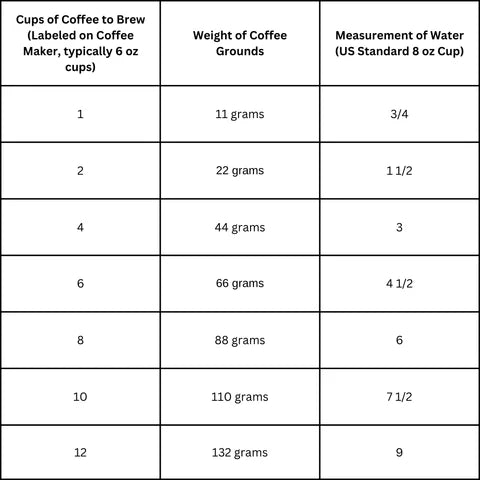
Credit: www.drivencoffee.com
Brewing Methods
How many scoops of coffee do you need for 10 cups? The answer can vary based on the brewing method you choose. Different methods require different amounts of coffee to achieve that perfect cup. Let’s dive into two popular brewing methods: the Drip Coffee Maker and the French Press.
Drip Coffee Maker
The drip coffee maker is a common household appliance. It’s convenient and easy to use. But how many scoops of coffee do you need for 10 cups?
A good rule of thumb is to use 1 scoop of coffee for every cup. So, for 10 cups, you would use 10 scoops. If you prefer a stronger brew, you can add an extra scoop or two.
Here’s a simple table to guide you:
| Number of Cups | Number of Scoops |
|---|---|
| 1 Cup | 1 Scoop |
| 5 Cups | 5 Scoops |
| 10 Cups | 10 Scoops |
Tips for Drip Coffee Maker:
- Use fresh, cold water for the best taste.
- Choose a medium grind for your coffee beans.
- Clean your coffee maker regularly to avoid build-up.
French Press
The French Press is known for its rich and full-bodied coffee. It’s a bit different from the drip coffee maker, and so is the amount of coffee you’ll need.
For a French Press, the general guideline is to use 1 scoop of coffee for every 4 ounces of water. Since a cup typically equals 8 ounces, you would need 2 scoops of coffee per cup.
For 10 cups, you would need:
- 10 cups x 8 ounces = 80 ounces of water
- 80 ounces / 4 = 20 scoops of coffee
Here’s a breakdown:
| Number of Cups | Ounces of Water | Number of Scoops |
|---|---|---|
| 1 Cup | 8 Ounces | 2 Scoops |
| 5 Cups | 40 Ounces | 10 Scoops |
| 10 Cups | 80 Ounces | 20 Scoops |
Tips for French Press:
- Use a coarse grind for your coffee beans.
- Let the coffee steep for about 4 minutes.
- Press the plunger down slowly to avoid sediment.
Common Mistakes
Brewing the perfect cup of coffee can be tricky, especially when determining how many scoops are needed for 10 cups. Many factors influence the taste and quality of your coffee. Common mistakes can make or break your coffee experience. Let’s explore these errors to ensure you enjoy the best brew every time.
Over Or Under Measuring
Over or under measuring coffee is a frequent mistake. It directly affects the flavor and strength of your brew. The standard ratio for coffee is one scoop (about 2 tablespoons) per 6-ounce cup of water. But this ratio can vary based on personal preference and the type of coffee. For 10 cups of coffee, you should use:
| Number of Cups | Number of Scoops |
|---|---|
| 10 | 16-20 |
Using too many scoops can make your coffee bitter and overpowering. Too few scoops can result in weak, watery coffee. Here are some tips to avoid these mistakes:
- Use a Kitchen Scale: Measuring by weight is more accurate than using scoops.
- Adjust to Taste: Start with the standard ratio and adjust based on your preference.
- Consistency: Use the same measuring tools and methods each time for consistent results.
Precision is key. Small deviations can significantly impact the taste. Ensure you measure accurately and adjust according to your taste.
Ignoring Freshness
Ignoring the freshness of your coffee beans is another common mistake. Freshness impacts flavor and aroma. Coffee beans start to lose their flavor soon after roasting. Here are some signs that your coffee isn’t fresh:
- Stale Aroma: Fresh coffee should have a rich, inviting aroma.
- Flat Taste: Stale coffee often tastes flat or bland.
- Oily Surface: Fresh beans have a slight sheen from natural oils.
To keep your coffee fresh, follow these tips:
- Buy Small Batches: Purchase small amounts of coffee more frequently.
- Store Properly: Keep beans in an airtight container, away from light and moisture.
- Grind Before Brewing: Grind only the amount you need before brewing.
Freshness matters. Fresh beans yield better flavor and aroma. Pay attention to the roast date and storage conditions. Fresh coffee makes a noticeable difference in every cup.
Tips For Perfect Brew
Brewing the perfect cup of coffee is an art. It requires the right amount of coffee, water, and proper techniques. If you are wondering how many scoops of coffee for 10 cups, you are not alone. This guide provides tips for achieving that perfect brew, ensuring every cup is rich and flavorful.
Water Quality
Water quality greatly affects the taste of your coffee. Using clean, fresh water is essential. Here are a few tips to ensure your water is just right:
- Use Filtered Water: Tap water can contain impurities that alter the taste of your coffee. A water filter removes chlorine and other contaminants.
- Avoid Distilled Water: While distilled water is free of impurities, it lacks minerals that enhance the flavor of coffee.
- Check Hardness: Water that is too hard or too soft can affect the extraction process. Aim for a balance. Use a test strip to check your water’s hardness.
Here’s a quick table to summarize ideal water qualities:
| Water Quality Factor | Ideal Range |
|---|---|
| Total Dissolved Solids (TDS) | 75-250 ppm |
| pH Level | 6.5-7.5 |
| Hardness | 50-150 ppm |
Following these tips will ensure your water enhances the flavor of your coffee, making each cup delightful.
Temperature Control
Temperature control is crucial for a perfect coffee brew. Water that is too hot or too cold affects the extraction process, leading to over-extraction or under-extraction.
Here are some tips to maintain the right temperature:
- Ideal Temperature: The perfect brewing temperature is between 195°F to 205°F (90°C to 96°C). Use a thermometer to check your water temperature.
- Preheat Equipment: Preheating your coffee maker or French press ensures the water stays at the right temperature throughout the brewing process.
- Avoid Boiling: Boiling water can scorch the coffee grounds, leading to a burnt taste. Let boiling water sit for 30 seconds before using it.
To help you keep track, here’s a simple table for temperature guidelines:
| Brewing Method | Temperature Range |
|---|---|
| Drip Coffee Maker | 195°F – 205°F |
| French Press | 200°F – 205°F |
| Pour Over | 195°F – 205°F |
By maintaining the right temperature, you ensure that your coffee grounds extract the perfect balance of flavors, resulting in a delicious cup every time.

Credit: www.umamicart.com
Frequently Asked Questions
How Much Coffee Do I Put In A 10 Cup Coffee Maker?
Use 10 tablespoons (or 1/2 cup) of coffee grounds for a 10 cup coffee maker. Adjust to taste.
Is A Coffee Scoop 1 Or 2 Tablespoons?
A coffee scoop typically equals 2 tablespoons. This standard measure ensures a consistent and balanced brew.
How Many Cups Of Coffee Are 4 Scoops?
Four scoops of coffee typically make four cups. Each scoop generally corresponds to one cup of coffee. Adjust based on your taste preference.
How Many Scoops Of Coffee For 8 Cups?
Use one to two tablespoons of coffee per cup. For 8 cups, use 8 to 16 tablespoons of coffee. Adjust based on your taste preference.
Conclusion
To make ten cups of coffee, use about 20 tablespoons of coffee. Adjust to taste. Some like it stronger, others prefer it mild. Experiment with different amounts. Always use fresh, quality beans for the best flavor. Enjoy your perfect cup every time.
Happy brewing!

